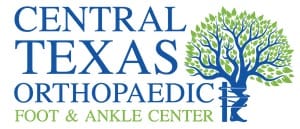Common Diagnoses:
Leg Fracture
Leg Fracture Overview
A broken leg (leg fracture) is a break or crack in one of the bones in your leg. Common causes include falls, motor vehicle accidents and sports injuries.
Leg Fracture Symptoms
A broken thighbone (femur) — the strongest bone in your body — usually is obvious because it takes so much force to break. But fractures of your shinbone (tibia) — the major weight-bearing bone in your lower leg — and the bone that runs alongside your tibia below your knee (fibula) may be more subtle.
Signs and symptoms of a broken leg may include:
- Severe pain, which may worsen with movement
- Swelling
- Tenderness
- Bruising
- Obvious deformity or shortening of the affected leg
- Inability to walk
Screen reader support enabled.
Leg Fracture Diagnosis
During the physical exam, the doctor will inspect the affected area for tenderness, swelling, deformity or an open wound.
X-rays usually can pinpoint the location of the break and determine the extent of injury to any adjacent joints. Occasionally, your doctor may also recommend more-detailed images using computerized tomography (CT) or magnetic resonance imaging (MRI).
Leg Fracture Treatment
Your bones will be kept from moving so they can heal using several methods:
Setting your leg: When you first get diagnosed, a doctor will keep your leg still with a splint. Your doctor might keep the splint on for a day to let the swelling go down.
Immobilization: Next, your doctor might use a splint or cast to stop your bones from moving around. You might also need crutches or a cane to get around easier. If that’s the case, you’ll probably use your crutches or cane for about 6-8 weeks.
Medications and treatment: Your doctor might suggest you take over-the-counter pain medication (like acetaminophen or ibuprofen) to help with the pain and swelling. But if your pain is severe, they might give you stronger painkillers.
Therapy: Once your leg heals and the doctor takes off your cast or splint, you’ll probably need some sort of therapy. Therapy will help your leg get back to normal, since your muscles will have weakened. It can take a few months or longer for your leg to heal completely.
Surgery: Although a cast or splint is usually all most broken bones need, you could need surgery, depending on your break. If you need surgery, pins, screws, and metal plates or wires are usually used to hold together the broken ends of a bone. For fractures in the middle part of the thigh bone (femur) or the shinbone (tibia), a metal rod sometimes is placed down through the center of the bone. This is done in the operating room.

